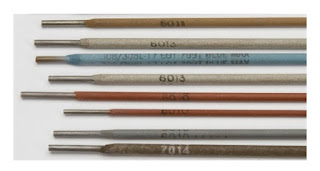Fluid Corrosion
In the selection of materials of construction for a particular fluid system, it is important first to take into consideration the characteristics of the system, giving special attention to all factors that may influence to corrosion. Since these factors would be peculiar to a particular system, it is impractical to attempt to offer a set of hard and fast rules that would cover all situations.
The materials from which the system is to be fabricated are the second important consideration; therefore, knowledge of the characteristics and general behavior of materials when exposed to certain environments is essential.
In the absence of factual corrosion information for a particular set of fluid conditions, a reasonable good selection would be possible from literature based on resistance of materials to a very similar environment. These data, should be used with some reservations. Good practice calls for applying such data for preliminary screening. Materials selected thereby would require further study in the fluid system under consideration.
Steel Corrosion
Steel material, pure metals and their
alloys tend to enter into chemical union with the elements of a corrosive medium to form stable compounds similar to those found in nature. When metal loss occurs in this way, the compound formed is referred to as the corrosion product and the metal surface is spoken of as being corroded.
Corrosion is a complex phenomenon that may take any one or more of several forms. It is usually confined to the metal surface, and this is called general corrosion. But it sometimes occurs along grain boundaries or other lines of weakness because of a difference in resistance to attack or local electrolytic action.
In most aqueous systems, the corrosion reaction is divided into an anodic portion and a cathodic portion, occurring simultaneously at discrete points on metallic surfaces. Flow of electricity from the anodic to the cathodic areas may be generated by local cells set up either on a single metallic surface or between dissimilar metals.
Nonmetallic System
As stated, corrosion of metals applies specifically to chemical or electrochemical attack. The deterioration of plastics and other nonmetallic materials, which are susceptible to swelling, crazing, cracking, softening, etc., is essentially physiochemical rather than electrochemical in nature. Nonmetallic materials can either be rapidly deteriorated when expose to a particular environment or at the other extreme, be practically unaffected. Under some condition a nonmetallic may show evidence of gradual deterioration. However, it is seldom possibly to evaluate its chemical resistance by measurements of weight loss alone, as is most generally done for metals.
Related Articles:









